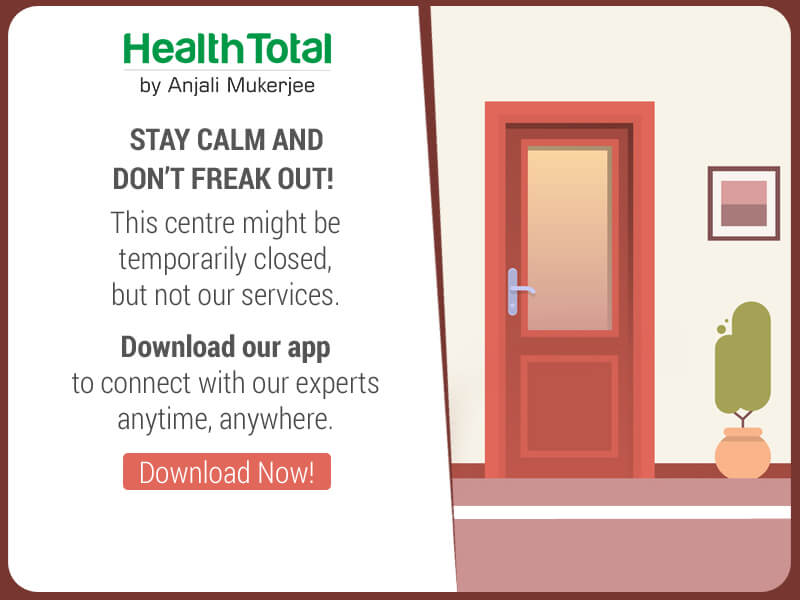Understanding Diabetes Symptoms and Causes
Diabetes affects millions of people around the world. Called a ‘silent killer’ because of its easy-to-miss symptoms, it can lead to severe health problems such as blindness, heart or kidney failure in the long run, if left untreated.
A healthy diet and medication help in controlling blood sugar levels. Also, shedding extra calories can prove beneficial in managing the symptoms of diabetes. Sign up for a FREE consultation and find out how easy it is to manage this health condition and lose weight through natural nutritional therapy!
If you’re diagnosed with diabetes, watching what you eat becomes the biggest priority. This does not mean starving yourself. Reducing just 7% to 10% of your body weight can reduce your risk of developing diabetes.
There are two main types of diabetes – type 1 and type 2.
Type 1 diabetes symptoms
Type 1 is common among children and teenagers. It develops due to an autoimmune response that damages the portion of the pancreas responsible for creating insulin. When there is a rise in the glucose level, it can cause harm to the heart, eyes and kidney.
So, how can you control high blood sugar in type 1? This type of diabetes cannot be managed and controlled by a healthy diet. The patient needs to check his blood glucose level frequently and take insulin regularly.
The possible symptoms of type 1 diabetes include –
- Increased urination – Due to the presence of excess glucose in the blood, the kidneys react by flushing it out.
- Extreme hunger or thirst – Frequent urination leads to loss of fluid and dehydrates the body. So, you feel thirsty often.
- Abnormal weight loss – Increased urination leads to loss of fluid as well as loss of calories, resulting in weight loss.
- Numbness in the hands or feet – Having high blood sugar for a long time can damage the nerves. This symptom is seen in prediabetics as well.
- Blurred vision – It happens when there is a sudden change in blood sugar – from low to high or high to low
- Slow healing of wounds or infections – If you fail to control blood sugar levels at the right time, it can lead to bacterial and vaginal infections
- Nausea or fatigue
- Dry, itchy skin
People with type 1 need to take insulin injections to provide their cells with the necessary hormone, but too much insulin can cause the cells to absorb glucose from the bloodstream. This lowers blood sugar levels.
Type 2 diabetes symptoms
While in type 1 the body inhibits the secretion of insulin, the case is different in type 2 diabetes. Here, the pancreas responds to the increased blood glucose levels by producing excess insulin. Type 2 usually occurs among people aged above 40. You can manage and control type 2 by maintaining a healthy weight; eating a diet rich in whole grains, fibre, fresh fruits and vegetables; getting good sleep and exercising regularly.
The symptoms of type 2 may not be visible for many years as the symptoms of type 1 diabetes. This means the disease could be damaging your body without you realizing it. Early symptoms of type 2 diabetes include –
- Skin infections
- Fatigue
- Frequent urination – People with type 2 are more likely to get a Urinary Tract Infection, and the risk is higher in women than in men.
- Thirst or hunger
- Blurred vision
- Erectile dysfunction in men
- Pain or numbness in hands or feet
The best way to find out if you have diabetes is to have a blood sugar test done. A weight loss diet and exercising for at least 30 minutes daily can lower the risk of developing diabetes symptoms.
Managing diabetes is not just about controlling blood sugar levels—it’s about a comprehensive approach that nurtures your body from within. At Health Total, we believe in treating diabetes through a holistic method, combining the powerful healing properties of Ayurveda, homeopathy, and personalized nutrition. This approach helps individuals not only manage their condition but also reduce their dependency on medications over time.
Diabetes management at Health Total focuses on achieving a balanced lifestyle through customized nutrition plans that cater to your specific health needs. Our expert nutritionists guide you to make food work as medicine, using natural foods to maintain healthy blood sugar levels. This, coupled with Ayurvedic treatments and homeopathic remedies, targets the root cause of the condition, ensuring long-term health improvements.
Our personalized programs are designed to help you shed excess weight, lower blood sugar, and improve overall well-being. Studies show that losing even a modest amount of weight—around 7-10% of your body weight—can significantly reduce the risk of complications associated with diabetes. This weight loss is achieved through a combination of dietary changes, regular exercise, and stress management techniques, all tailored to fit your lifestyle.
At Health Total, we focus on the importance of eating foods that are high in fiber, vitamins, and minerals, while also reducing processed foods and sugars. With our constant support and regular consultations, you can transform your health and achieve optimal blood sugar control.
Take charge of your health today by booking a consultation with our experts. Together, we can work towards a healthier future and a life free from the complications of diabetes. Your journey to better health starts with just one step.
If you are looking for a personalised diet plan to manage diabetes and shed those extra kilos, speak to Health Total experts. Sign up for a FREE consultation with Health Total experts to get more tips for improving your health and achieving weight loss healthily with diet or managing any other health condition. Call toll-free at 1-800-833-171709 and Book Free Consultation!.
